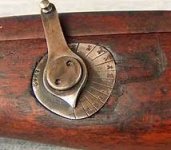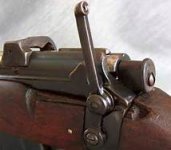tahunua001
New member
hello all,
I am currently taking a communications class where I will be giving a speech on WWI weapons and tactics. I have heard from several fellows online that the reason that rear sights on milsurps are graduated so high was so that entire units could bombard a broad area rather than the expectation that a soldier could actually hit something at 2700 meters. however I can not find a single credible source to substantiate these claims. does anyone have a credible source for this information?
I am currently taking a communications class where I will be giving a speech on WWI weapons and tactics. I have heard from several fellows online that the reason that rear sights on milsurps are graduated so high was so that entire units could bombard a broad area rather than the expectation that a soldier could actually hit something at 2700 meters. however I can not find a single credible source to substantiate these claims. does anyone have a credible source for this information?


